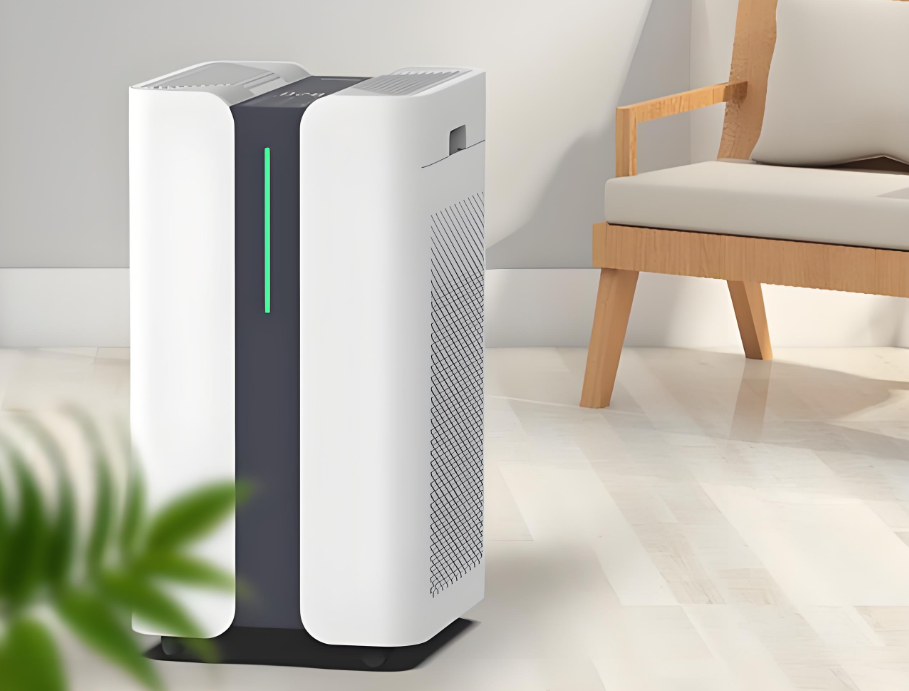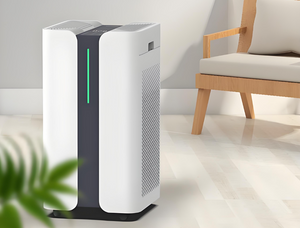
Appliance Inspection | Air Purifier Inspection Standards and Methods
Air purifier inspection standards and methods
Air purifiers are household appliances used to improve indoor air quality, effectively removing particulate matter, gaseous pollutants, and microorganisms. They are particularly suitable for infants, the elderly, and those with respiratory diseases. To ensure their safety, performance, and durability, inspections must adhere to strict standards and methods, covering aspects such as appearance inspection, electrical safety, purification performance, energy efficiency, and noise .

1. Appearance and workmanship inspection
Through visual inspection and tactile inspection under natural light or standard light source, the requirements are as follows:
-
Surface quality : The shell should be smooth without scratches, dirt, or discolored spots, with uniform color, and without cracks, deformation or obvious injection defects.
-
Structural coordination : The gaps between plastic parts are even, without burrs or looseness; buttons, indicator lights, and digital tubes are installed correctly without offset or light leakage.
-
Logo and printing : Brand logo and parameter labels are clear and firm without fading or warping.
2. Electrical safety inspection
(1) Signs and instructions
-
The instructions must clearly indicate the cleaning and maintenance steps and clearly state that "power must be turned off before maintenance."
-
The product nameplate must include key parameters such as rated voltage, power, and clean air delivery rate (CADR), and the label must be durable.
(2) Protection against electric shock
-
When the peak voltage is greater than 15kV, the discharge energy is ≤350mJ; the live parts under the removable cover must comply with the safety limit when measured 2 seconds after removal.
-
The bottom opening must be designed to prevent small objects (such as coins) from entering and contacting live parts:
-
Desktop placement type: the distance between the opening and the live parts is ≥6mm (with column feet ≥10mm).
-
Ground placement type: distance ≥ 20mm.
-
-
The interlock switch must be connected to the input circuit to prevent accidental power-on during maintenance.
(3) Leakage current and insulation strength
-
The high-voltage transformer must pass the withstand voltage test (e.g. 1500V/1min without breakdown) and have sufficient internal insulation.
-
The leakage current of the whole device is ≤0.75mA (Class I electrical appliances) or 0.25mA (Class II electrical appliances).
(4) Ozone concentration (ionization type purifier)
-
The ozone concentration produced by the ionization device must be ≤0.05ppm (national standard limit) to avoid health risks.
3. Purification performance test
(1) Particulate matter purification
-
Clean Air Delivery Rate (CADR) : Measured value ≥ 90% of the nominal value (e.g., if the nominal value is 300m³/h, the measured value must be ≥ 270m³/h).
-
Cumulative Clean Volume (CCM) : The CCM of particulate matter must be correlated with CADR and meet the requirements of P1-P4 grades (for example, when CADR ≤ 150m³/h, CCM ≥ 3000mg).
(2) Purification of gaseous pollutants
-
Formaldehyde CADR : Measured value ≥ 90% of the nominal value; under single component loading, formaldehyde CCM must reach F1-F4 level (for example, when CADR ≤ 60m³/h, CCM ≥ 300mg).
-
Mixed pollutants : If the product is labeled as having multiple components (such as benzene, TVOC), they must be tested separately and meet the standards.
(3) Microbial removal
-
Antibacterial/sterilization function : When the function is clearly stated, the antibacterial rate is ≥90% (such as Staphylococcus aureus and Escherichia coli).
-
Virus removal rate : When the virus removal function is explicitly stated, the removal rate for viruses such as H1N1 must be ≥ 99.9% (a third-party test report is required).
4. Energy efficiency and power consumption
-
Standby power :
-
Off mode ≤ 0.5W;
-
Non-network standby ≤1.5W;
-
Networked standby ≤ 2.0W (up to 2.5W for models with a display).
-
-
Purification energy efficiency :
-
Particulate matter energy efficiency ≥ 4.00m³/(W·h), measured value ≥ 90% of the nominal value;
-
Energy efficiency of gaseous pollutants (formaldehyde) ≥1.00m³/(W·h), and the measured value ≥90% of the nominal value.
-
5. Noise test
-
In rated mode, the measured noise value is ≤ nominal value + 3dB(A) and meets the segment requirements (e.g., noise ≤ 55dB when CADR ≤ 150m³/h).
6. Other key tests
-
Structural stability : tilted 10° without tipping over, filter compartment door opened and closed ≥5000 times without damage.
-
Filter life reminder : It has filter replacement indication function, and the timing or sensor logic is accurate.
-
App/remote control function (if applicable): Network control is responsive and mode switching is delay-free.
Professional inspection process example
-
Sampling : Sampling is carried out according to AQL 2.5 standard, and full inspection is carried out for batches ≤ 50 units.
-
Unpacking inspection : Check the completeness of the packaging, accessories (filter, remote control), and instructions.
-
Functional testing :
-
After power on, the wind speed and mode switching of each gear are normal;
-
Sensor (PM2.5/formaldehyde) sensitivity verification;
-
Abnormal status alarm (filter missing, high pollution reminder).
-
-
Safety test : ground resistance ≤ 0.1Ω, damp insulation resistance ≥ 2MΩ.
-
Performance retest : Randomly select 1-2 units and send them to the laboratory for testing of core parameters such as CADR, CCM, and noise.
Share this product

Appliance Inspection | Air Purifier Inspection Standards and Methods
Air purifiers are household appliances used to improve indoor air quality. They can effectively remove particulate matter, gaseous pollutants, and microorganisms. They are particularly suitable for infants, the elderly, and patients with respiratory diseases. To ensure their safety, performance, and durability, inspections must follow strict standards and methods.
